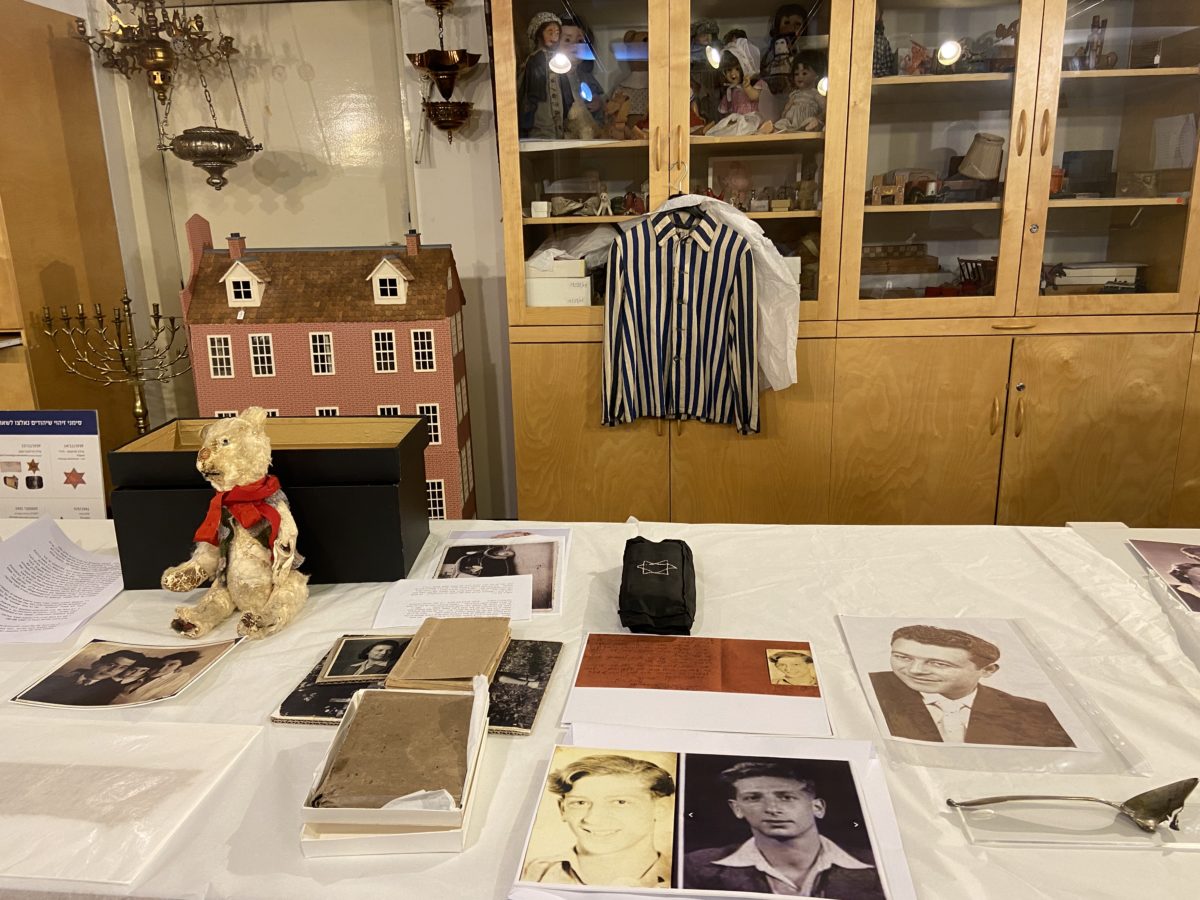
Some of the Holocaust artifacts stored at Yad Vashem, the World Holocaust Remembrance Center.
A moth-eaten teddy bear, a mangled silver spoon, a well-worn headscarf – all inanimate objects, yet each tells a story, in a powerful and sensitive way, of one of the darkest periods of human suffering, shedding light on both the trials and triumphs of individuals during the Holocaust. As Israel prepares for Yom Hashoah, its annual Holocaust Remembrance Day this week, Jewish Insider’s Ruth Marks Eglash was given a unique look inside the vast archives and storage vaults at Yad Vashem, the World Holocaust Remembrance Center in Jerusalem, catching a haunting glimpse into the horrifying experiences of the millions who perished and those who survived.
Careful watch: Michael Tal, curator and director of the artifacts department in the museum’s archives division, keeps careful watch over each item stored in the archive and catalogs new arrivals – a handful of objects are received each week – sent from across the globe by aging survivors or their descendants. He is diligent about researching the backstory of everything that reaches his hands, cross-checking personal stories with the extensive list of names – Holocaust survivors and victims – kept at Yad Vashem and searching out the photographs of each item’s owner and their relatives.
Priceless objects: “Even though I’ve been here for a very long time, I’m still surprised that we keep receiving things,” Tal told JI in an interview. “Gathering artifacts is only one element of what needs to be done, we also need to tell the stories behind them too. That’s what makes an ordinary object so impactful, so priceless. When we receive an object, we try to find out as much information as we can on the person who it belonged to,” he continued, underscoring that in many ways, these belongings are as much testimony to what happened 80 years ago as the writings, artwork and photographs that are also kept at Yad Vashem.
Telling the story: “Every object tells a story,” Tal said, estimating that there are more than 42,000 artifacts stored at Yad Vashem, from the striped uniforms once worn by those imprisoned in concentration camps to unused stacks of yellow stars the Nazis forced Jews to sew onto their clothing, as well as long-lost precious Shabbat candlesticks, Chanukiahs (eight-branch candelabras) and other religious paraphernalia.
Memories from the past: Opening a closet filled with neatly wrapped camp uniforms, Tal explained that for many survivors, such artifacts, even though they are a chilling reminder of the horrors of the past, are also a link to a lost life and lost loved ones, and a way of reminding the world of the terrible injustices to which they were subjected. “As the war continued, people managed to hold on to less and less of their possessions,” he said. “Either they were forced to sell the things they managed to take from home for food, or their belongings were stolen from them. After the war, the artifacts they managed to hold onto represented their past lives and memories.”
Read the full story here.
Credit: Source link


Comments are closed.